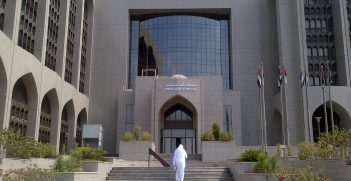The Politics of the Fed's New Framework

For the first time, the annual central banking conference at Jackson Hole was held online and live streamed to the public. It was also the first time the US Federal Reserve had ever conducted a review into its monetary policy strategy.
The beaver sat on a small dam over a creek. Classical music played in the background. The image flickered for a second before disappearing, replaced by the face of Jerome “Jay” Powell, Chairman of the Federal Reserve. Chairman Powell’s eagerly anticipated keynote address announced that the Fed would allow inflation to run above the 2% target and would no longer treat low unemployment as sufficient cause for policy tightening. The biggest shift in a decade, it may have long-term political consequences
The Review
The review was in response to years of below-target inflation and a decline in the neutral rate of interest. In addition to an academic research conference and internal working groups, the Fed also hosted a series of unprecedented public consultations with groups including unions and minorities.
The headline announcement was the adoption of average inflation targeting. Instead of a fixed 2 percent target, periods of low inflation will now be “made up” by periods of symmetrically higher inflation. Since inflation has been below target for more than a decade, these “make ups” could be significant.
In addition, low unemployment will no longer be sufficient to trigger a policy reaction. Previously, policy would be preemptively tightened as unemployment neared estimates of its “natural rate.” This logic led the Fed to raise rates four times in 2018 when unemployment fell below 4 percent, only for inflation to stay flat. That will no longer happen. Low unemployment will only trigger policy action if inflation actually increases. This will allow the Fed to run a “high pressure economy,” pursuing growth for longer to bring marginalised groups back into the labour market.
So what?
The new relaxed attitude towards inflation has led some to warn of hyperinflation. Most responses have been more muted. The Fed’s announcement was anticipated for some time, but it is more evolution than revolution. The Reserve Bank of Australia already does a version of average inflation targeting.
So, what will change? Right now, not a lot. The Fed is signalling that policy will remain accommodative for a long time to come, and markets have continued their bull run. COVID-19 has depressed both inflation and employment, so it will be many years before the Fed’s new lenient attitude to inflation is tested.
An Uncertain Future
Beneath the technicalities of targets and tightening, two longer-term trends are at work. There is an age-old argument in central banking between advocates of rules and advocates of discretion. For the former, monetary policy should be determined by mechanical rules. The famous Taylor Rule, in use before the GFC, is an equation that provides the ideal interest rate based on the level of income and inflation. Advocates of discretion argue that uncertainty and technical inaccuracies make rule-based policy making rigid and inflexible. If the unpredictable post-crisis economy had already given them the upper hand, then Powell’s announcement was the victory lap. Under the new approach, the Fed will have discretion to decide how far above the target inflation can rise, and over how long a period the average will be calculated.
Greater agility comes with risks. Monetary policy is political, full of difficult decisions that create winners and losers. The famed Volcker shock contributed to the decline of US manufacturing and the Latin American debt crisis. Quantitative easing has probably exacerbated inequality. Mechanical rules are a political guardrail, a defence against accusations of bias, and they protect independence.
Part of their attraction was the putative real-world relationships they were based on, most famously the Philips curve. It posited an inverse relationship between unemployment and inflation. Lower unemployment leads to wage increases which flow through to higher inflation; high unemployment has the opposite effect. The breakdown of this relationship – record low unemployment through 2018 and 2019 barely moved inflation – is part of the reason rules-based approaches have lost their appeal.
But discretion-based policy making is risky business for a politically independent institution. “We have your best interests at heart” is cold comfort to those on the wrong end of an interest rate hike. The kinds of creative policy that discretion allows, like bank bailouts and negative interest, generate controversy. Discretion is doubly risky in a political climate where Trump has normalised once inconceivable attacks on the Fed.
This helps explain the second trend, the Fed’s attempts to build a closer relationship to the public. Transparency and accountability have become the Fed’s new watchwords. References to “the public” in speeches are at an all-time high. In his address, Powell repeatedly spoke about minorities and low-income groups. The “Fed Listens” events put the Fed face to face with groups it usually only dealt with through aggregate statistics. The trend extends beyond the Fed. The Bank of England has started citizen’s panels to connect with the public, and the European Central Bank (ECB) has signalled cautious approval for workers and unions demanding higher wages.
Greater transparency and public engagement help offset the immediate political risks associated with discretion, but they open monetary policy to future debates that Central Bankers might find uncomfortable. In admitting the policy errors of the prior framework, like the 2018 rate hikes, the Fed opens the door to future questioning. With no rules, the Fed’s judgement is up for criticism, even as greater public engagement introduces new, sometimes angry voices to the conversation.
This can only be a good thing. Monetary policy has always been conspicuous for its aloofness. The first press officer at the Bank of England was told to “keep the bank out of the press and the press out of the bank.” The nature of the post-crisis economy is still far from certain, and the twelve years since the crisis have shown that Central Bankers are learning on the fly like the rest of us. In a democracy, it is only fair that this be up for debate.
Lewis Jackson writes about economics and politics with a special interest in international politics and central banks. He has a Masters in Public Policy and Political Economy and worked as a management consultant for several years. You can find more of his writing here.
This article is published under a Creative Commons License and may be republished with attribution.




